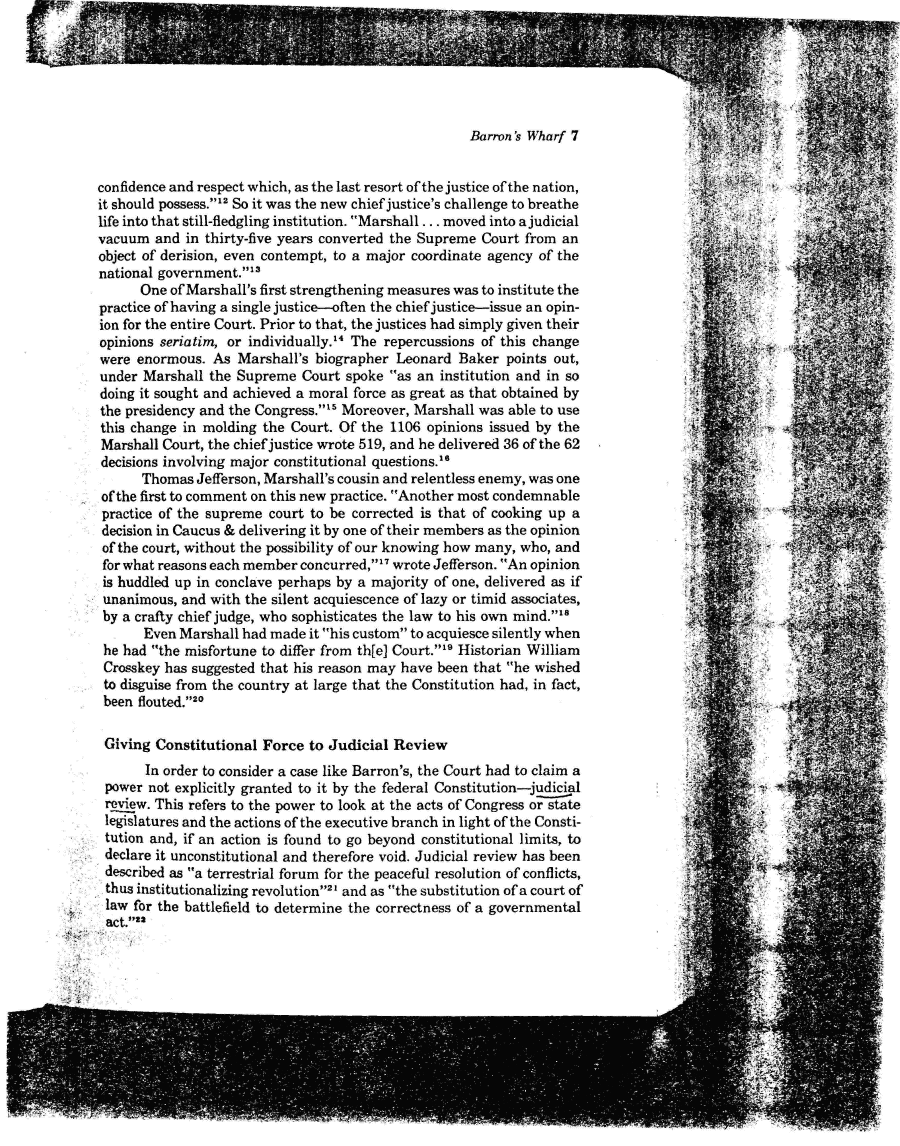|
confidence and respect which, as the last resort of the justice of the nation,
it should possess."12 So it was the new chief justice's challenge to breathe
life into that still-fledgling institution. "Marshall... moved into a judicial
vacuum and in thirty-five years converted the Supreme Court from an
object of derision, even contempt, to a major coordinate agency of the
national government."13
One of Marshall's first strengthening measures was to institute the
practice of having a single justice—often the chief justice—issue an opin-
ion for the entire Court. Prior to that, the justices had simply given their
opinions seriatim, or individually.14 The repercussions of this change
were enormous. As Marshall's biographer Leonard Baker points out,
under Marshall the Supreme Court spoke "as an institution and in so
doing it sought and achieved a moral force as great as that obtained by
the presidency and the Congress."15 Moreover, Marshall was able to use
this change in molding the Court. Of the 1106 opinions issued by the
Marshall Court, the chief justice wrote 519, and he delivered 36 of the 62
decisions involving major constitutional questions.16
Thomas Jefferson, Marshall's cousin and relentless enemy, was one
of the first to comment on this new practice. "Another most condemnable
practice of the supreme court to be corrected is that of cooking up a
decision in Caucus & delivering it by one of their members as the opinion
of the court, without the possibility of our knowing how many, who, and
for what reasons each member concurred,"17 wrote Jefferson. "An opinion
is huddled up in conclave perhaps by a majority of one, delivered as if
unanimous, and with the silent acquiescence of lazy or timid associates,
by a crafty chief judge, who sophisticates the law to his own mind."18
Even Marshall had made it "his custom" to acquiesce silently when
he had "the misfortune to differ from th[e] Court."19 Historian William
Crosskey has suggested that his reason may have been that "he wished
to disguise from the country at large that the Constitution had, in fact,
been flouted."20
Giving Constitutional Force to Judicial Review
In order to consider a case like Barren's, the Court had to claim a
power not explicitly granted to it by the federal Constitution—judicial
review. This refers to the power to look at the acts of Congress or state
legislatures and the actions of the executive branch in light of the Consti-
tution and, if an action is found to go beyond constitutional limits, to
declare it unconstitutional and therefore void. Judicial review has been
described as "a terrestrial forum for the peaceful resolution of conflicts,
thus institutionalizing revolution"21 and as "the substitution of a court of
law for the battlefield to determine the correctness of a governmental
act""
|

